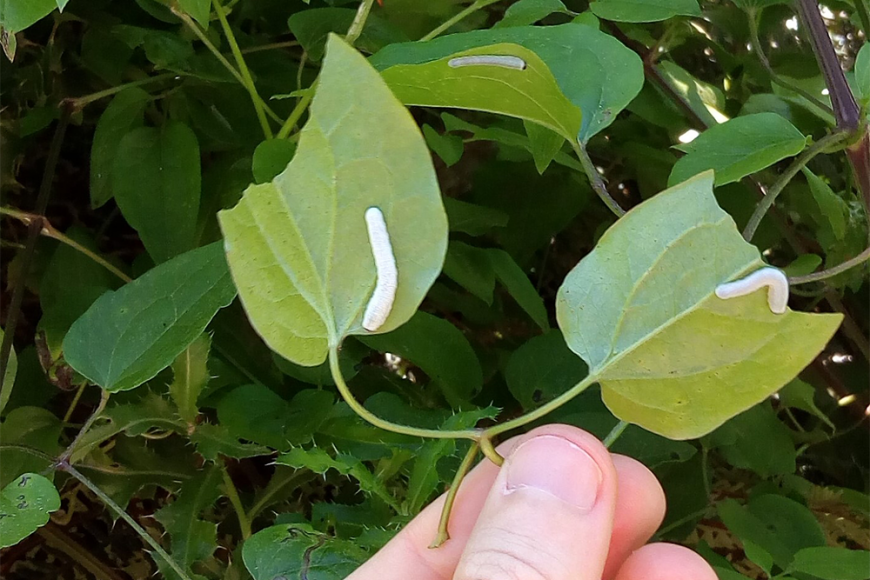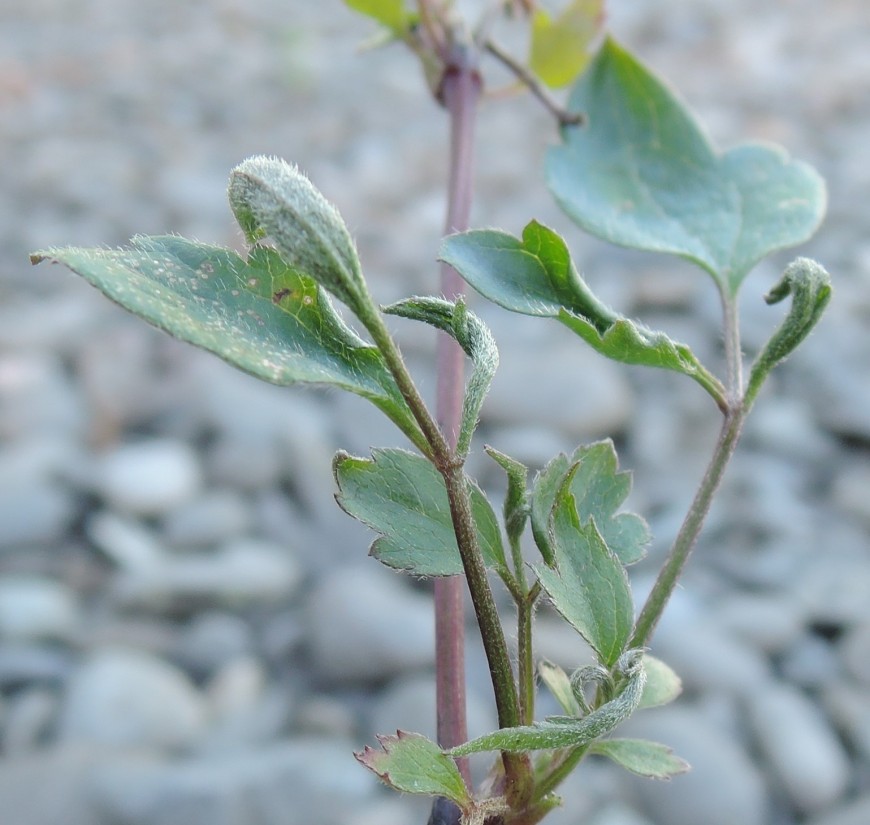Two Recruits to Battle Old Man’s Beard

Sawfly larvae and damage
Both agents have been particularly challenging to work with, but persistent effort has paid off. The sawfly was re-released in 2018 after largely failing to establish when it was first released in the late 1990s. Following an intensive mass-rearing programme at our Lincoln site, thousands of sawfly larvae were released at one site in the Waipara District in Canterbury in the South Island. Our team have been monitoring this release site closely since early 2019, consistently noting the presence of adult males. But it wasn’t until this last season that Arnaud could report back that the sawfly population is now booming.
“I visited the release site monthly from November last year until April, and each time it didn’t take me long to spot heaps of males flying around in search of females, which remain hidden,” he said. “Even more promising, during my last visits I easily found sawfly larvae feeding on the leaves of old man’s beard, without much search effort,” he enthused. A sawfly larva was a rare sight 2 years ago, but now even their damage has become obvious at the Waipara release site. These recent observations suggest that collecting and relocating part of this sawfly population may be possible in the next couple of years.

Shoot tip damaged by the mite
Along with the sawfly work, Arnaud was also very busy preparing releases of the old man’s beard mite for regional councils. Rearing of this agent had a slow start, but last spring old man’s beard plants heavily infested with the mites were sent across the country for planting out in the field. Among the multiple locations where the mite was released is a site selected by Environment Canterbury, very close to the sawfly release site in the Waipara district. “The mites were assumed to be good dispersers, being closely related to the broom gall mite (Aceria genistae), and we very soon found evidence of it,” said Arnaud. “While observing the sawfly feeding damage to old man’s beard in March, I spotted the curled and atrophied leaflets typical of the damage caused by the mite. By dissecting a few buds I was able to confirm the presence of the mites. This was about 8 months after the official release took place in August last year, and I was also able to confirm they had spread at least 800 m from the plants that were potted out in the field near old man’s beard infestations,” he added.
Travelling around Canterbury armed with a microscope, Arnaud expanded his search and found the mites at several new locations. One new location is at least 65 km away from the nearest known established site. In fact, Arnaud reports that it has become challenging for him to find clean plants without a population of the mites throughout Canterbury as far as Hanmer Springs.
These recent findings are very encouraging, and by all accounts it seems we finally have two agents to tackle old man’s beard, which has severe environmental and productive sector impacts. The establishment of both the sawfly and the mite at the Waipara sites provides an excellent opportunity to monitor populations of the agents together, and hopefully to see their combined impacts on old man’s beard. The rapid dispersal of the mite over long distances and even over a range of hills (the Port Hills, Christchurch) seems to be a positive sign that we can expect big things from this tiny mite.
Key contact

